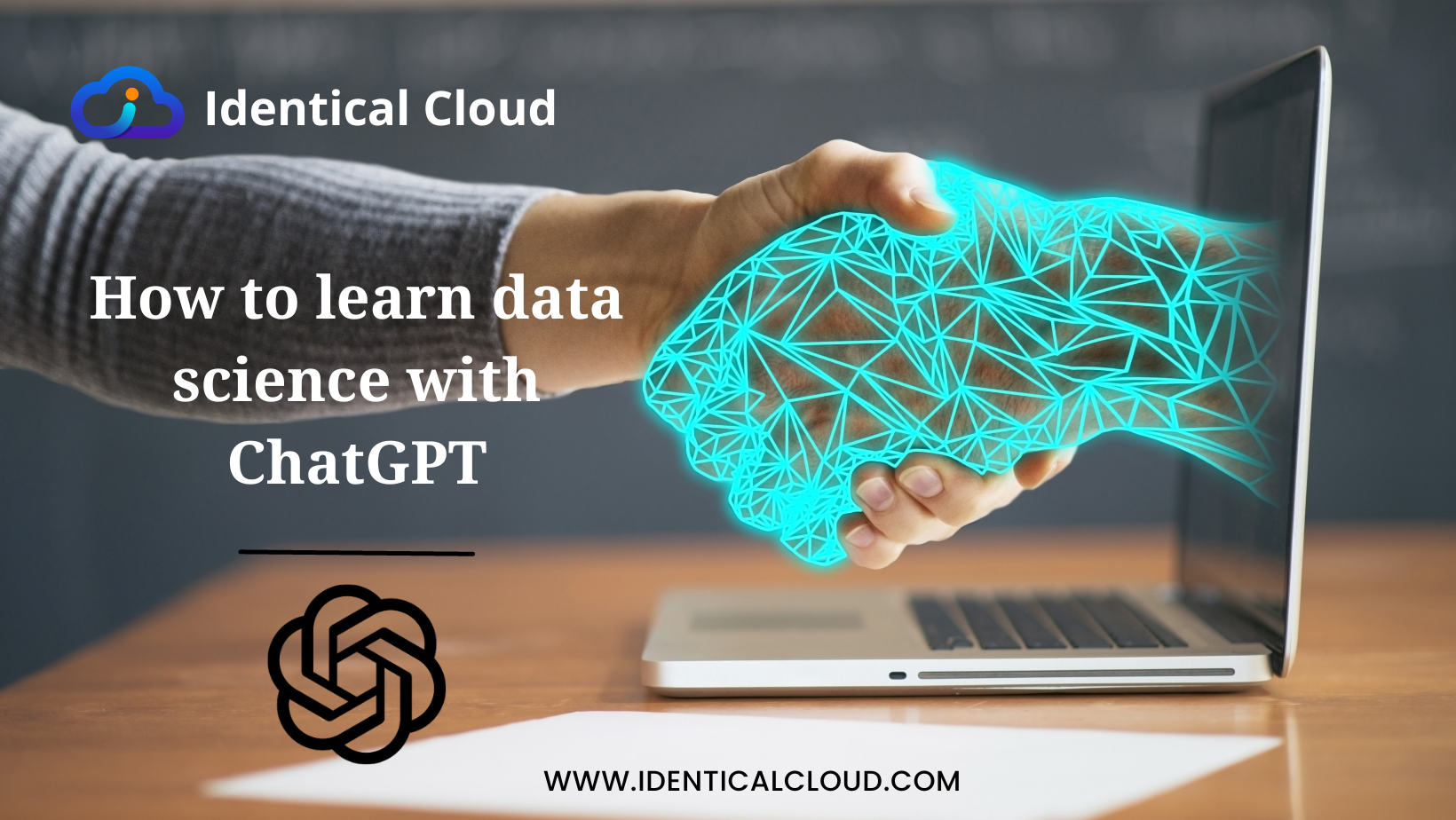
How to learn data science with ChatGPT
How to learn data science with ChatGPT
Data science is a fascinating field that combines statistics, programming, and domain knowledge to extract valuable insights from data. It’s a rapidly growing area with applications in various industries, from finance and healthcare to marketing and technology. If you’re looking to embark on a journey to become a skilled data scientist, you might be surprised to learn that ChatGPT can be an excellent companion on your learning path.
In this blog, we’ll delve into the details of how you can use ChatGPT to learn data science effectively.
- Understanding the Basics
Before diving into data science, it’s essential to have a solid understanding of the foundational concepts. ChatGPT can help you learn about statistics, probability, linear algebra, and other fundamental topics. You can ask questions like:
- “What is the central limit theorem?”
- “Explain the concept of correlation.”
- “How does matrix multiplication work in linear algebra?”
- Coding and Programming
Data science requires proficiency in programming languages like Python and R. ChatGPT can assist you in learning the syntax, best practices, and common libraries used in data science. You can ask for coding tips, debugging assistance, and even explore specific data science libraries:
- “How do I read a CSV file in Python?”
- “What is the pandas library used for?”
- “Show me an example of data visualization using Matplotlib.”
- Machine Learning and Algorithms
A significant part of data science involves machine learning algorithms. ChatGPT can explain the concepts behind various algorithms, their applications, and guide you through hands-on implementations. You can explore different types of machine learning, such as:
- “What is a decision tree?”
- “Explain the difference between supervised and unsupervised learning.”
- “How can I implement a basic neural network?”
- Data Cleaning and Preprocessing
Data in its raw form is often messy and needs to be cleaned and preprocessed before analysis. ChatGPT can provide insights into data cleaning techniques and strategies, such as handling missing values, outlier detection, and feature scaling:
- “What are some common methods to handle missing data?”
- “How do I detect and deal with outliers in a dataset?”
- “What is normalization, and why is it important in data preprocessing?”
- Real-world Projects and Problem Solving
To truly master data science, you need to work on real-world projects. ChatGPT can help you brainstorm project ideas, offer guidance on project design, and assist with problem-solving when you encounter challenges:
- “Can you suggest some interesting data science project ideas?”
- “How should I approach building a predictive model for stock prices?”
- “I’m stuck on a data preprocessing issue, can you help me troubleshoot?”
- Staying Updated
Data science is a dynamic field with new techniques and tools emerging regularly. ChatGPT can keep you updated on the latest trends, research papers, and industry best practices:
- “What are the current trends in natural language processing (NLP)?”
- “Can you explain the concept of transfer learning in machine learning?”
- “Tell me about any recent breakthroughs in data science.”
The pros and cons of using ChatGPT for data science
ChatGPT is a powerful AI tool that can be used for a variety of tasks, including data science.
Here are some of the pros and cons of using ChatGPT for data science:
Pros:
- Speed and efficiency: ChatGPT can generate text quickly and accurately, which can save time and effort on tasks like data cleaning, feature engineering, and model building.
- Automated workflows: ChatGPT can be used to automate many of the repetitive tasks involved in data science, freeing up data scientists to focus on more strategic work.
- Enhanced insights: ChatGPT can be used to generate insights from data that would be difficult or time-consuming to find manually.
- Improved collaboration: ChatGPT can be used to collaborate with other data scientists and stakeholders, providing a shared space for brainstorming and idea generation.
- Learning tool: ChatGPT can be used to learn about data science concepts and techniques.
Cons:
- Cost: ChatGPT is a paid tool, which can be a barrier for some users.
- Accuracy: ChatGPT is not always 100% accurate, and it can sometimes generate incorrect or misleading results.
- Bias: ChatGPT is trained on a massive dataset of text and code, which may contain biases. This can lead to ChatGPT generating biased results.
- Security risks: As with any AI tool, ChatGPT poses security risks. It is important to use ChatGPT in a secure environment and to be aware of the potential risks.
- Human oversight: It is important to use ChatGPT with human oversight, as it is not a replacement for human expertise. ChatGPT can be a valuable tool, but it should not be used blindly.
Overall, ChatGPT can be a powerful tool for data science. However, it is important to be aware of its limitations and to use it with caution.
Learning data science with ChatGPT can be a rewarding experience. It serves as a versatile tool that can provide explanations, guidance, and support throughout your learning journey. Remember to supplement your ChatGPT interactions with hands-on practice, online courses, and engagement with the data science community to build a comprehensive skillset that will empower you in this exciting field.
